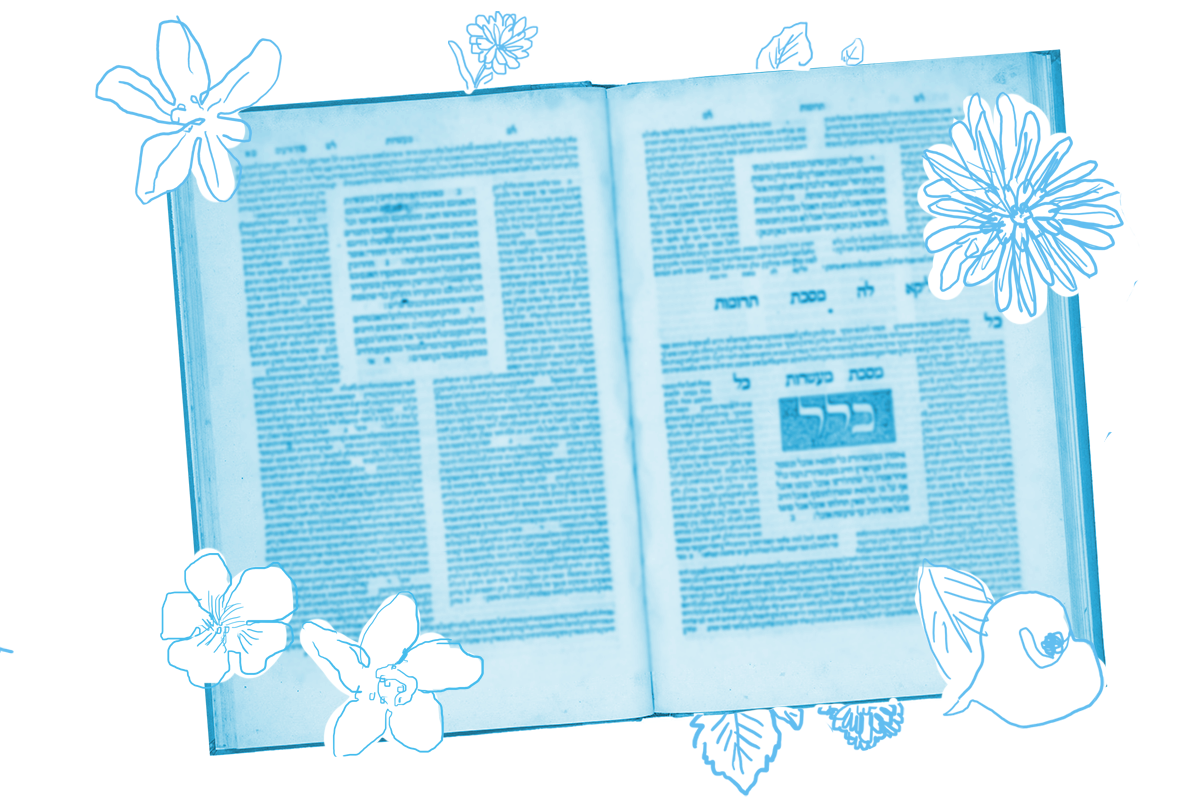On today’s page, the rabbis enter a discussion of the materials used to build the Mishkan (Tabernacle), a temporary house of God used by the Israelites while they wandered the desert, until they could enter the Promised Land and build a more permanent Temple.
Numbers 4:25 mentions a special covering draped over the Mishkan: “They shall bear the curtains of the Tabernacle, and the Tent of Meeting, its covering, and the covering of tahash that is upon it.” The word tahash is not a common Hebrew word so of course the rabbis want to know: what does it mean?
Rabbi Yosef infers that the tahash must have been a kosher animal whose hide was used for the covering, as only kosher animals could have been used to construct the Tabernacle. Rabbi Nehemya is more specific, and says that “the tahash were similar to the species of undomesticated animals called tela ilan.” But this definition contradicts that of Rabbi Yosef, because a tela ilan (much later commentators speculate it is a ferret, but it is not clear what the rabbis have in mind exactly) is not a kosher animal. To resolve the conflict, the Gemara emends Rabbi Nehemya’s statement:
This is what Rabbi Nehemya intended to say: It was like a tela ilan in that it was multicolored; however, it was not an actual tela ilan.
Finally, the Gemara rejects the idea that the tahash is comparable to a species known today:
With your help, My Jewish Learning can provide endless opportunities for learning, connection and discovery.
Rabbi Ela said that Rabbi Shimon ben Lakish said that Rabbi Meir used to say: The tahash that existed in the days of Moses was a creature unto itself, and the Sages did not determine whether it was a type of undomesticated animal or a type of domesticated animal. And it had a single horn on its forehead, and this tahash happened to come to Moses for the moment while the Tabernacle was being built, and he made the covering for the Tabernacle from it. And from then on, the tahash was suppressed and is no longer found.
According to the Gemara, then, the tahash was a unicorn, in both senses of the word. It was a creature with a single horn on its forehead, but it was also unique, existing only in this one moment for this one particular task. Plus, it was multi-colored.
Like the unicorn, the Mishkan was unique, designed for a particular time and task. And like the unicorn, the Mishkan is now only accessible in legend. The rabbis of the Babylonian Talmud live and create in a world hundreds of years removed from the Mishkan, and from its replacement the Temple. For them, the tahash suggests that something can be both precious and ephemeral — existing for one moment alone, and from then on only in our memories.
Read all of Shabbat 28 on Sefaria.
This piece originally appeared in a My Jewish Learning Daf Yomi email newsletter sent on April 3, 2020. If you are interested in receiving the newsletter, sign up here.



